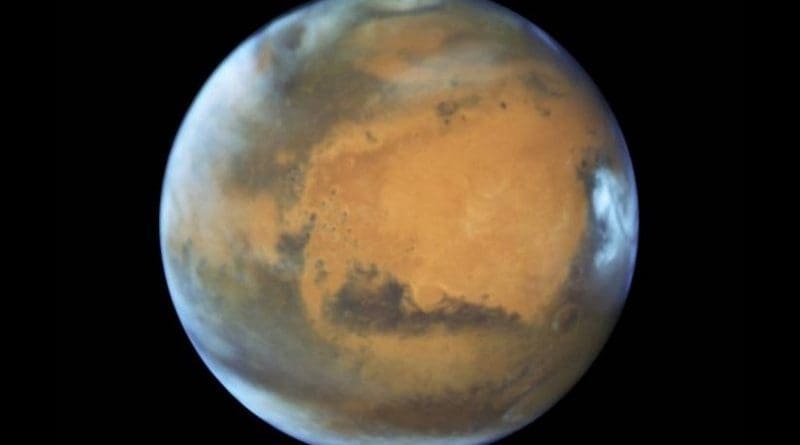Using Photosynthesis For Martian Occupation – While Making Space Travel More Sustainable
Researchers are working on sustainable technology to harvest solar power in space – which could supplement life support systems on the Moon and Mars.
In a study published in Nature Communications, scientists assess a new technique which could convert renewable, green energy from outside the Earth’s atmosphere. They are taking advantage of photosynthesis – the chemical process plants undergo every day to create energy – to help the space industry become more sustainable.
The research led by the University of Warwick evaluates the use of a special device known as semiconductor to absorb sunlight on Moon and Mars. It is hoped that the devices could promote Martian life support systems.
These “artificial photosynthesis devices” undergo the same processes which keeps plants alive on Earth – they convert water into oxygen using only sunlight whilst recycling carbon dioxide. These integrated systems have the advantage of directly using solar power and could save on weight on long-term space travels in comparison to traditional systems currently in use on the International Space Station – making space travel more efficient.
There is a need for efficient and reliable energy sources in space to enable the exploration of our solar system. It is hoped that the technology could be installed on the Moon and Mars to harvest green energy to help power rockets and complement life support systems for the production of oxygen and other chemicals as well as the recycling of carbon dioxide. The insights gained in this study with respect to improving device efficiencies also feed back into their optimization for Earth applications and also provide insights into the performance of traditional solar cells in space.
Assistant Professor Katharina Brinkert, Department of Chemistry, said: “Human space exploration faces the same challenges as the green energy transition on Earth: both require sustainable energy sources. With sunlight being so abundantly available in space, we have shown how this source could be used to harvest energy – much like plants back on Earth – for life support systems for long-term space travel. The technology could provide ample oxygen production and carbon dioxide recycling on both Moon and Mars.”
Associate Professor Sophia Haussener, at the Ecole Polytechnique Fédérale de Lausanne (EPFL), Switzerland, added: “In this study, we finally quantify the potential of such devices for extra-terrestrial use and provide initial design guidelines for their potential implementation.”

